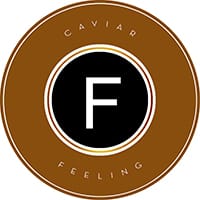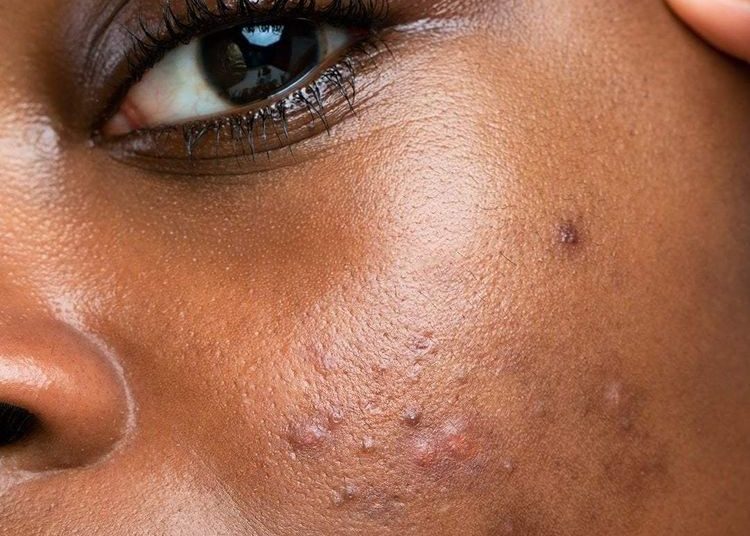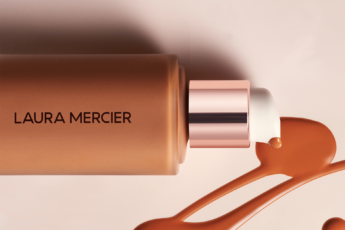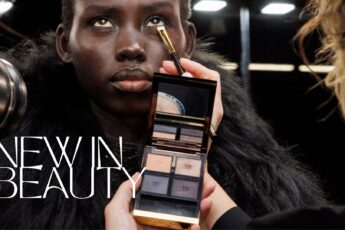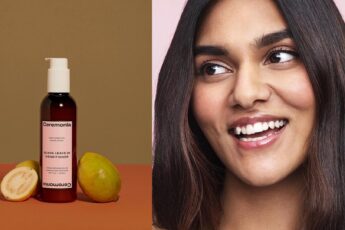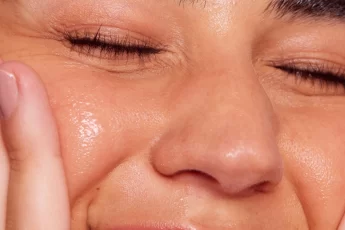The dreaded appearance of a pimple, usually in the most upfront position at the most inopportune time… Does it sounds familiar? We try to treat and cover it for a couple of days after it manages to settle down and go away.
However, for a percentage of the population, some zits left a permanent reminder in the form of scarring. And usually, when this happens, it is not a solo effort. We spoke with Madeline Calfas RN, Founder of the Wellness Group, and GMC Cosmetica, and she gave the CF team the best tips and treatments to get rid of acne scars without a mortgage to pay up.
You’ll also like this:
Ask The Expert: 6 Reasons You’re Getting Eyebrow Pimples
The Expert Talks: How to Break With Active Acne For Once and All
How Skin Exfoliation Can Dramatically Help Or Worsen Your Acne
What is acne scarring, and is it possible to get rid of it?
Scarring occurs when acne cysts are formed. The cysts are pus-filled and destroy the skin tissue around them The cyst actually behaves like a bit of a spacer and prevents the skin from coming together as it heals, creating an indentation or scar in its place once the acne cyst drains and heals.
Different types of acne scars commonly seen:
- Ice Pick Scars: These scars are quite deep and narrow and extend into the dermal layer of the skin, which can make them quite difficult to treat. Trying to cover them with make up will often result in the make up sitting inside the scar and making the appearance of them worse.
- Box Scars: This type of scar has well-defined edges, and are a lot more shallow than the ice pick type. You will usually find these on the cheek and temple area.
- Rolling or Undulated Scars: This scarring type appears on the skin as depressions and bumps. The scars can sometimes be ‘anchored’ the deeper structures, making them difficult to treat.
The good news is that there are a lot of treatments available that can help improve acne scarring. You will most likely always have some scarring remaining due to the depth of the scars, but by softening the edges of ice-pick and box scars and making them more shallow, you can definitely make them less noticeable and easier to cover.
Treatments such as laser resurfacing and RadioFrequency therapy are great options for acne scars – they are usually done in a minimal number of treatments with excellent results. The downside to them is that they can give the bank account a bit of a hit and are not ideal if you are on a budget.
How to get rid of acne scars on a budget?
1. Skin Needling
There is a multitude of devices available these days to perform skin needling. This is the use of a small device with little tiny needles applied to the skin to stimulate collagen. The benefits are that there is usually little downtime, and it can really be quite cost-effective. It will require multiple treatments, but many clinics will often offer packages, making it much more cost-effective. Take note though, that not all needling devices are created equal, so it is worth making sure that the clinic you choose to go to has a good device, as well as an experienced skin therapist – it will make all the difference when it comes to the end result.
2. Microdermabrasion
This works in a similar way to skin needling in that it’s all about collagen stimulation and softening the edges of sharper scars. Microdermabrasions are either diamond tip, or crystal machines, and both work by effectively sanding back the epidermal layers of skin. Think of it like sanding your hardwood floors back to get the new wood underneath. Again, benefits are very little to no downtime, but multiple treatments are needed.
Affordability will usually range from around $150-$220. Take note again that there is absolutely a difference between machines – there is the Spa Grade option, which is a much lighter treatment, and there is Medical Grade, which is a stronger treatment. With microdermabrasion, an experienced therapist will often be able to spot treat some of the deeper scars to soften them.
3. High Quality Skincare
I can’t stress enough the importance of a good skincare program. Think of it as your homework. Any treatments you do will help the scarring to a point, but a good skincare routine will enhance your end result. So what makes a skincare routine a good one? Believe it or not, it does not have to be the most expensive product or a program that takes 45mins in the bathroom each morning.
Having a good exfoliant with a great cleanser a base moisturiser is a great start. Then adding in some Alpha Hydroxy Acids (AHAs) into a serum to apply both morning and night is going to give your skin that extra boost.
There are some amazing skincare ranges out there, and whilst you don’t have to find one that will cost the equivalent of the national debt, it is worth investing a little bit for the right products. When it comes to AHA products, anything that is prescribed by a medical practitioner is going to give you more bang for your buck than a product you pick up in Priceline.
4. Consistency
As much as a great treatment and fantastic skincare routine are essential to the successful treatment of acne scarring, your skincare is only as good as the effort you put in. Like cheating on a diet, if you cheat and skip your routine, the results will literally show.
A good routine won’t take you long, and it doesn’t have to be the last thing you do before you go to bed. If you are like most of us and crash on the couch watching Grey’s Anatomy reruns, chances are you won’t be stepping into the bathroom to clean your face as you stumble into your bed. So do it when you change into your pj’s before you sit on the couch of death. Your skin will thank you for it.
5. Low-Level Light Therapy (LLLT)
Using low-level light therapy is often used to help stimulate wound healing and the production of what we call ground substance. This is essentially the base of connective tissue, which helps collagen stimulation and the improvement of the skin. LLLT works by using different wavelengths of the light spectrum and has the benefits of being 100% pain-free (it’s kind of like falling asleep on a beach but without the UV), and most clinics again will offer multi-treatment packages, which makes it quite affordable.
Some clinics even offer them as ‘add-ons’ after having other treatments, so you can really make this work for your budget. It is important to note though that LLLT as a stand-alone works better on fresher, more recent scars rather than acne scarring that is 20 years old.
6. IPL/BBL therapy
IPL (Intense Pulse Light) and BBL (BroadBand Light) can help to improve acne scars by reducing the appearance of any of the brown or red spots that are left behind from acne. Whilst we technically don’t consider these tell-tale marks to be scarred in the traditional sense, they often can be almost as distressing, as, in some people, it can make it look as though there is more acne on the skin. Using IPL/BBL can help to remove the brown spots, usually within one or two treatments. These brown spots are what we call hyperpigmentation, and it is the skin’s response to the inflammation and trauma of the acne that creates these melanin hotspots.
The red spots that are left after acne are epithelial, or healing cells. The IPL/BBL treatments can help to reduce the redness in approx. 4-5 sessions. Both types of marks will usually eventually go away on their own, but can often take months, if not years, depending on skin type. The IPL and BBL treatments can dramatically speed the process up and have the added bonus of boosting collagen within the skin. Again, not all IPL/BBL machines are created equal, so it is important to find someone qualified and experienced, especially if you have a darker skin type, as there can be a small risk of burns and more pigmentation.
7. Ingestible Beauty
Whilst taking a good quality collagen supplement won’t necessarily improve your scars, it will do wonders for your skin in general, and may also help to improve your skin’s response to treatments. Including selenium and zinc in your diet is another way to improve your skin, and the better your skin looks, the better your scars will look. Speak to a qualified professional to ensure you get a quality product with the correct amounts of nutrients for maximum benefit.
At the end of the day, there is a multitude of options out there to treat acne scars. It is important to remember the following:
- Don’t even think about treating scarring if you still have active acne. You need to get the active acne under control, otherwise all your efforts (and finances) will go to waste as new acne will create new scars.
- Do your research. Don’t just go for the cheapest, even when on a budget. Make wise, informed choices about the treatments and skincare that you use. You can also check some reviews of the treatments you choose to use, like, a plasma pen photo of before and after, to make sure. Spending a little bit more will ultimately work out a lot more cost-effective than buying a whole heap of cheap products and treatments that don’t work.
- Have realistic expectations. Acne scars, especially the deeper ones, will never totally go away. It’s all about improving and softening scars, and the surrounding skin.
- Remember, it’s all about the collagen. Collagen is truly our best friend.
You’ll also like this:
When You Should Use Concealer or Foundation First?
A Cult Serum Tried And Tested, Is It That Good?
General FAQS
What does cystic acne look like?
Cysts are large, pus-filled lesions that look similar to boils. Like nodules, cysts can be painful and should be treated by a dermatologist since they also can scar.
How long does cystic acne last?
Often, the surface of the skin will have swollen, red bumps that are incredibly painful to touch, as the cysts underneath are inflamed. If ignored, cysts can take anywhere from 1-4 weeks to go away by themselves
Does drinking water help acne?
Drinking water can help promote skin hydration, which could help prevent acne.
